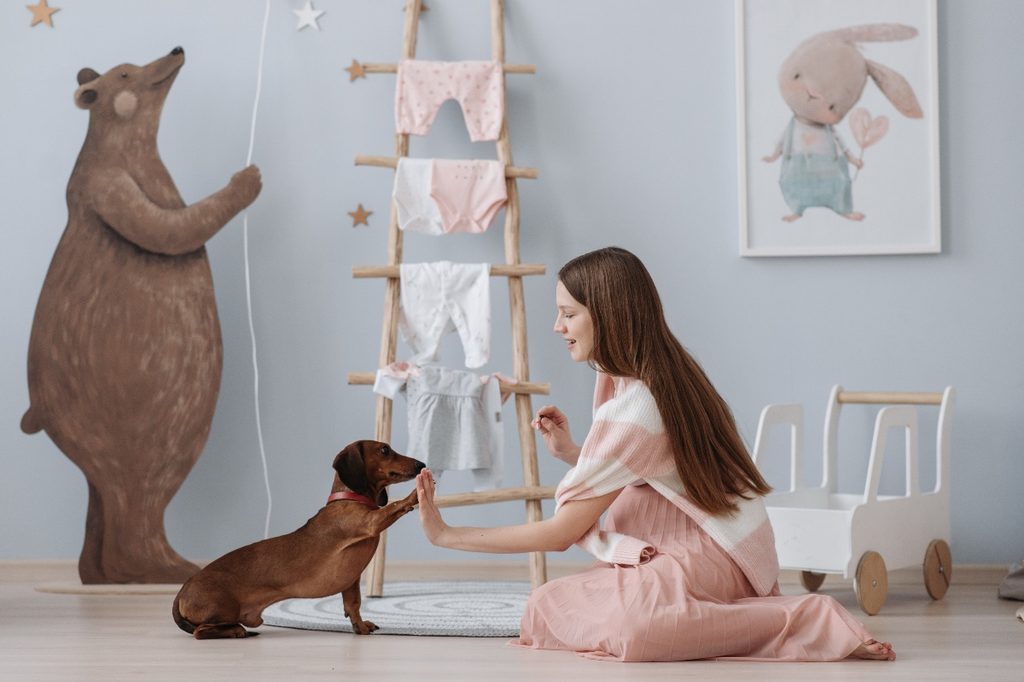Signing up for dog obedience training is one of the first orders of business after you bring your new addition home. Your pup may have started strong and even graduated with flying colors. They sat, stayed, and came running to you like they were on the fast track for the Westminster Dog Show. Even better, they were housebroken — no more accidents to clean. Having a well-trained dog keeps your pup safe and you less stressed.
What happens if, all of a sudden, that goes out the window? Perhaps your dog is still in training but suddenly stops following commands or struggles to progress to the latest lessons. Your pet may also have post-dog obedience training regression days or even years after graduating.
It can be highly troubling for dog parents, who want the best for their pets and kitchen floors. Here’s how to get Fido back on track with training.

Reasons dog obedience training stalls
Figuring out what triggered the slowdown or regression in training is essential in mapping out appropriate next steps. There are many reasons your dog may not be taking to training anymore.
Health issues
Training regression, particularly sudden accidents in the home after housebreaking, could signal a health issue. A good first step if you notice your dog is taking an obedience training detour is to talk to your vet to rule out any underlying health issues, such as urinary, GI, or hearing problems.
Stress
Are you at your best when you’re stressed? Probably not. The same goes for your dog. Has there been a big life change? For example, perhaps you got a new pet (or had one pass away) or brought home a new baby. New homes, health issues, or a shift in your work schedule may also stress out your pet. Think about something that may be troubling your pet and empathize with them if you believe you can trace their regression back to stress.
Consistency
Consistency prevents your dog from getting confused. Are you practicing commands for a little bit each day? If so, are you following through on house rules? Dogs are adorable. Letting little things slide is tempting, like pulling on a leash or jumping on the table to steal your sandwich. However, if you say “No” one day, shrug it off the next, and then try to say “No” again, your dog may not get the point.
Breed
The breed doesn’t define every dog, but some are known for being easier to train than others. For example, golden retrievers and Labradors are some of the easiest dogs to train, while Chihuahuas can take more time. Moreover, some breeds have specific characteristics you can’t “train away.” Akitas typically don’t do well with other people or dogs. You may have to live with those traits.
Age
Puppies go through developmental changes, just like human babies. They may have shifts in energy or curiosity that affect training. Also, as pets get older, they may be less apt to take to training. That doesn’t mean you can’t train them, but they may need more help and patience to become the best version of themselves.

How to help your dog through a training regression
Once you have figured out the reason for your dog’s training issues, you can work through it. Try these tips.
Talk to professionals
A vet and dog trainer can be key teammates as you and your dog tackle and re-tackle training together. They have tons of experience with dogs and have likely worked with families just like yours. A vet can rule out medical issues and refer you to a trainer who can create a customizable plan for your pet.
Adjust expectations
Your dog may simply need more time to master some commands. Practice patience. You may need to spend more time working on basic commands, like sit and stay, before trying something fancy, such as rolling over.
Use short commands
Your dog is like a perpetual toddler. They can’t understand lectures. Keep commands short and snappy. One to two words, such as, “Fido, sit,” works better than, “Fido, sweetie, I need you to sit because it’s important that you’re patient and don’t jump on me as I try to serve you dinner.” Use a firm but kind voice.
Stay positive
Dog obedience training can get frustrating when it slows, or a pet regresses. However, it’s essential to keep your cool. You want your dog to respect and love you, not fear you. Continue to rely on positive reinforcement like praise and treats rather than punishments and yelling.
Practice
Yes, it makes perfect. Try to do short training sessions at home daily, such as for 5 minutes. Always end on a high note with your dog nailing a command.
Dog obedience training is important and should be a positive experience for you and your pet. Like humans, pets can go through phases, which may lead to training regression. Training can also feel like it’s stalling. If training isn’t going well, evaluate why it may be happening, such as a health issue or stress. Your vet and a trainer are key resources who can help you and your pet through this setback. Ensure you’re being consistent, using short commands, and not moving too fast through training. Keep it positive. Your dog can pick up on your stress, which may only compound the issue. You want them to love and trust you — it’s the foundation for training.



